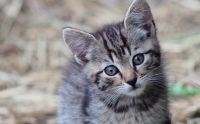Prolonged Cat Breeding Season
Traditionally, kitten season lasted from spring to fall, when cats are most fertile. However, in recent years, this period has been starting earlier and ending later. Animal shelters in the United States and around the world have seen an increase in the number of kittens brought in for adoption, significantly straining their resources and capabilities. Moreover, the growing population of free-roaming cats poses a threat to local wildlife, especially bird populations.
Impact on Shelters and Wildlife
Cats are recognized as highly effective predators capable of significantly affecting biodiversity. Free-roaming cats, especially those unsterilized, can contribute to the extermination of certain animal species, particularly on islands where human-introduced cats have caused the extinction of many species. This phenomenon presents a significant challenge for wildlife conservation and requires effective management actions.
Seeking Solutions
Addressing the issue of the growing number of free-roaming cats and its impact on wildlife requires collective action and innovative approaches. Techniques such as Trap-Neuter-Return (TNR) are promoted as humane and effective methods of controlling free-roaming cat populations. However, for these actions to be effective, the involvement of local communities, animal welfare organizations, and authorities is necessary. Collaboration among various stakeholders can contribute to a sustainable solution while protecting ecosystems and ensuring cats have dignified living conditions.
Kitten Season - A Challenge Requiring Understanding, Compassion, and Innovation
Addressing the challenges posed by kitten season requires not only understanding and compassion but also commitment and innovation in seeking sustainable solutions. These actions are essential for both shelters and wildlife to effectively manage the growing cat population while also safeguarding our shared environment.











